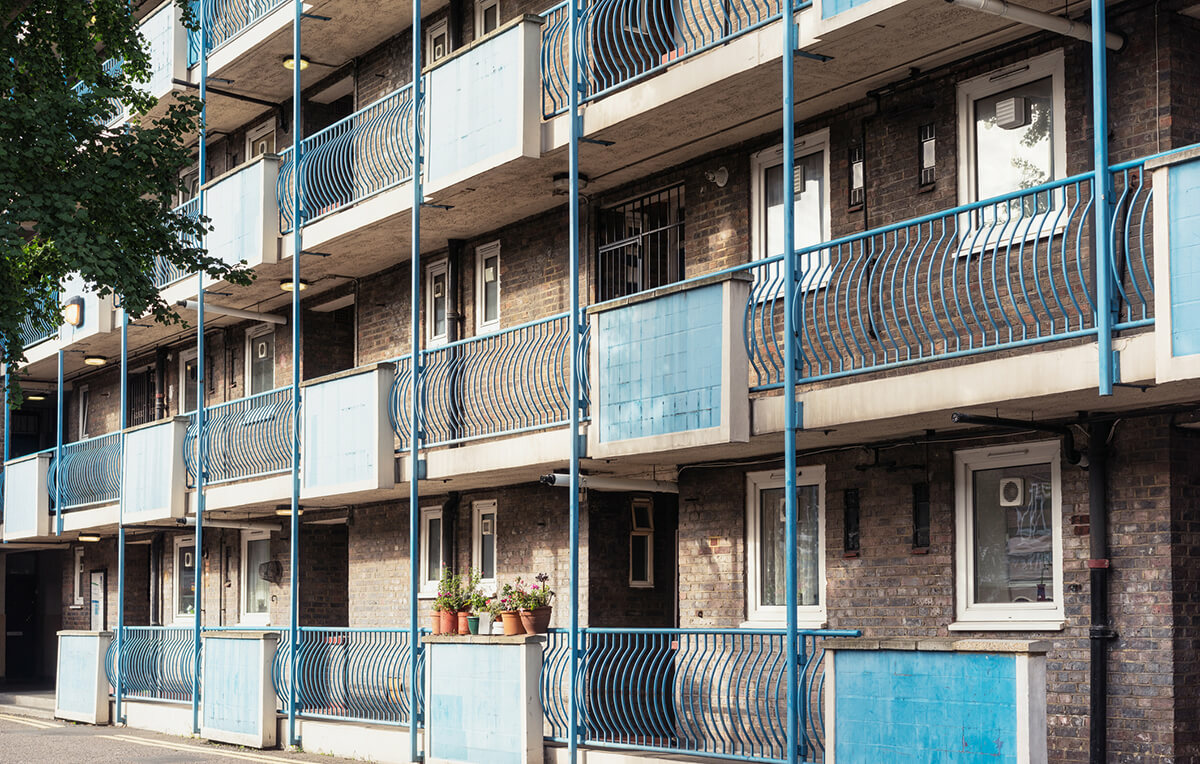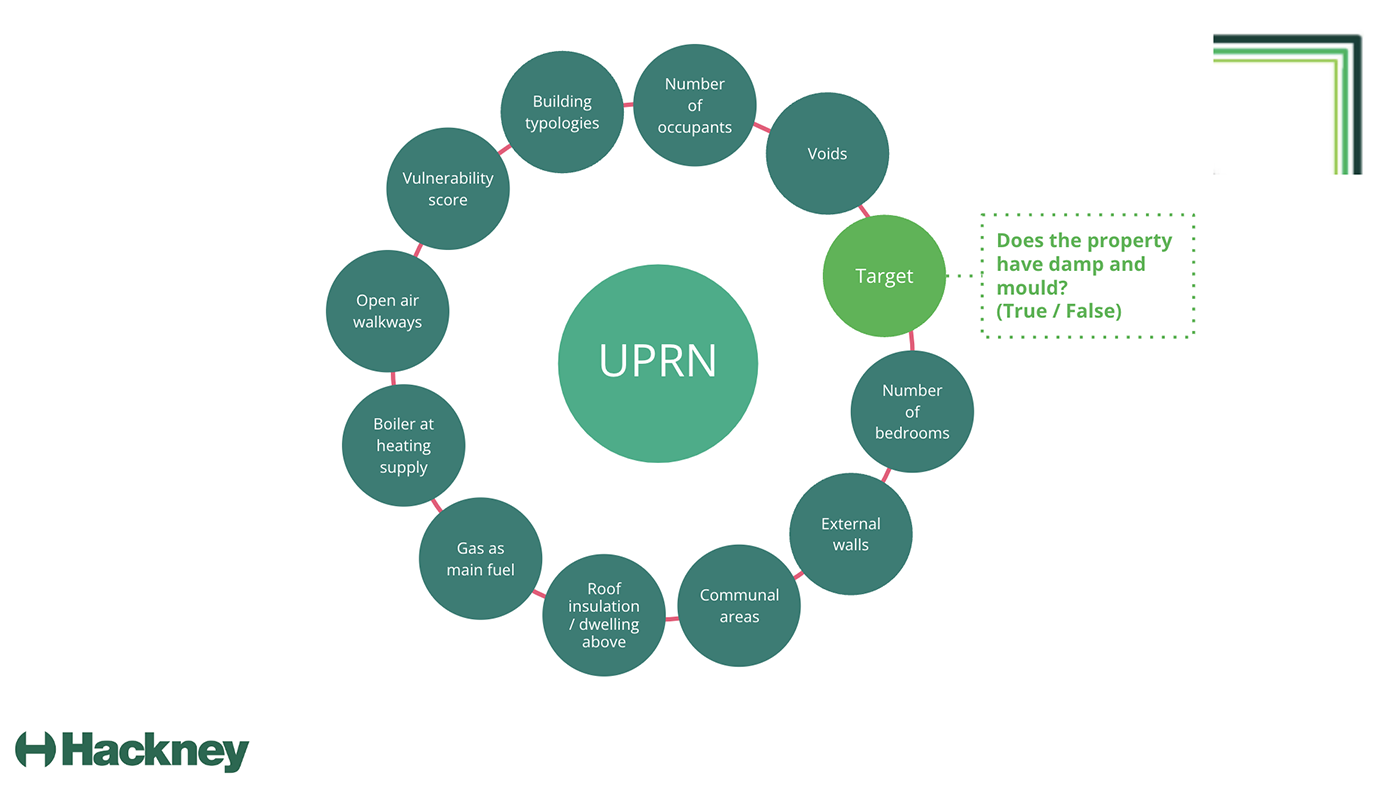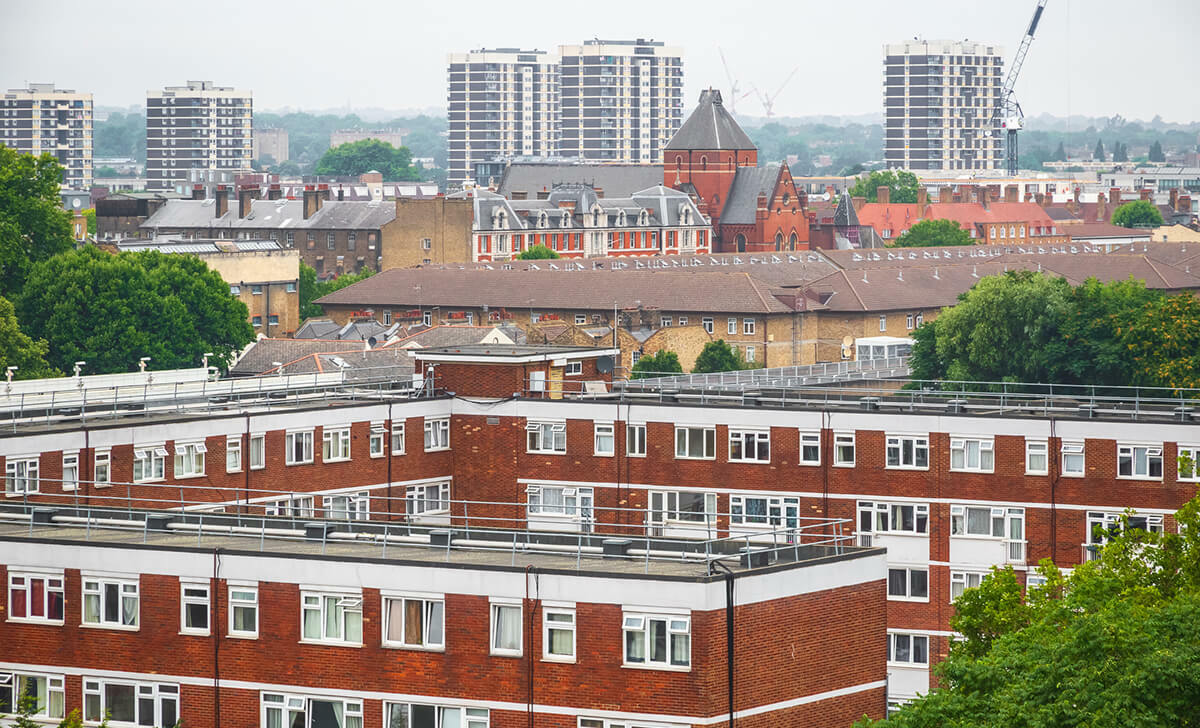Data insights have become a critical tool for identifying and addressing housing issues efficiently in the London Borough of Hackney.

The challenge
It is the responsibility of all social landlords to take swift action to address damp, cold and unsafe homes, and fix hazards within a strict time frame to protect the health and wellbeing of the residents they support. In Hackney, using data to better target properties for proactive interventions to improve and maintain decent housing conditions for residents has been a focus for several years now, and has helped prepare the service following the introduction of the Social Housing (Regulation) Act and Awaab’s Law.
The Data and Insight team at Hackney has worked with colleagues across the council to understand the extent of damp and mould within Hackney’s housing stock. This initiative highlighted gaps in the council’s property information, leading to another project aimed at improving intelligence on these properties. The council has, to date, reached out via text message to over 1,600 households within its own housing stock which their data has deemed could be at possible risk. These text messages were sent in small batches, to ensure that the Repairs service were able to respond with surveyor appointments where residents confirmed the presence of damp or mould in their property.
The team at Hackney wanted to create an intelligent dataset that identifies properties at risk of damp and mould and those housing vulnerable residents. Extracting data from the repairs system, which primarily focuses on trades like carpentry, plumbing and electrical works posed challenges. The team managed to identify key flags such as older properties, wet rooms, low-rise buildings (under six floors), poor insulation, and overcrowded conditions.
The council utilised its Local Land and Property Gazetteer (LLPG) and the Unique Property Reference Numbers (UPRNs) contained within the data to take a data-driven risk based approach to tackling damp and mould, as recommended by the Housing Ombudsman. The team wanted to answer two key questions:
- What are the characteristics of properties and tenants that are at risk of disrepair through damp and mould?
- Which properties and estate blocks are most likely to be at risk of damp and mould, and what is the scale of the problem?
The solution

The team developed a vulnerability score to prioritise its outreach efforts. Risk factors included the presence of children, disabilities, age of residents, and connections to social care services. Vulnerability was also extracted from case notes across systems. This score helped identify and contact the most at-risk households first. An added complication included children being known at a variety of different addresses, so further data improvement and data matching work needed to be undertaken.
Originally developed for COVID-19 work, the Vulnerability Index (VI) has been repurposed for damp and mould management. It is now being expanded to cover a wider spectrum of vulnerabilities. For instance, the VI is now being used to prioritise contact with residents when lifts go out of service as well as prioritise home visits to those with multiple VI factors for tenancy and household checks.
One other major driver for our proactive approach is the impact of legal disrepair on Hackney residents, and the financial burden of resolving these issues. By addressing issues early, the council aims to improve living conditions for residents and save the organisation money

The benefits
Accurate data matching using UPRNs was essential for improving overall data quality and bringing the datasets together to prioritise properties most likely in need of attention. By leveraging data effectively, Hackney is beginning the transition from a reactive to a proactive stance in managing housing conditions. In time, its efforts should not only help to prevent costly repairs but also enhance the quality of life for residents, ensuring emerging issues in their homes are dealt with sooner so that they are safe and fit for purpose.
Visibility and collaboration across the authority have been crucial. Departments like Environmental Services, Housing, and Children’s Social Care have benefited from the analytical work, as they often lack the capacity to perform such analyses themselves. By building up a community of practice for data analysts across the council and fostering regular show-and-tell sessions, the team is sharing insights and best practices more widely.
Looking forward - improving data models and using innovative sensor technology
The Data and Insight team is working with the Housing service to continually improve the data models that underpin this work, in particular the Vulnerability Index.
As part of the pan-London LOTI damp and mould project, Hackney has started installing IoT sensors in houses to monitor conditions. This will offer another exciting data perspective on understanding how dwellings are performing following intervention measures. Watch this space!



